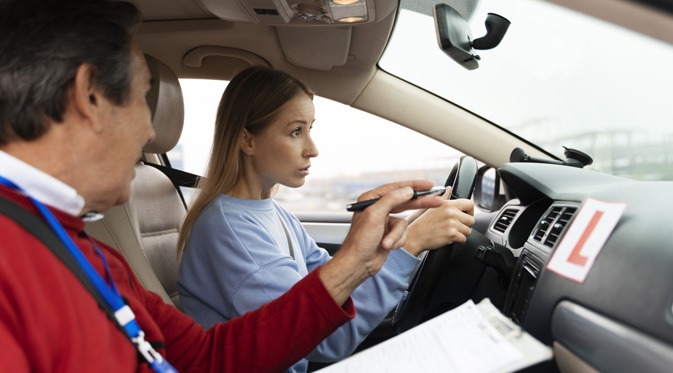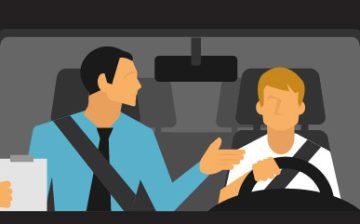How Long Does It Take to Get Your Certificate from an Online Driver’s Education Course?
In today’s fast-paced world, convenience is key, even when it comes to obtaining essential documents such as driver’s education certificates. With the advent of online driver’s education courses, individuals have the opportunity to learn at their own pace from the comfort of their homes. However, one common question that arises is: How long does it take to get your certificate from an online driver’s education course? Let’s delve into the intricacies of this process to provide clarity.
Understanding Online Driver’s Education Courses
What are Online Driver’s Education Courses?
Online driver’s education courses are web-based programs designed to educate individuals on the rules of the road, safe driving practices, and state-specific regulations. These courses typically consist of interactive modules, quizzes, and videos to facilitate learning.
Benefits of Taking Online Driver’s Education Courses
- Flexibility to study at any time and from any location with internet access.
- Cost-effectiveness compared to traditional in-person classes.
- Ability to progress through the material at a personalized pace.
Process of Obtaining a Certificate
Course Duration and Requirements
The duration of an online driver’s education course can vary depending on the state requirements and the individual’s learning speed. Generally, courses range from a few weeks to a few months and may require a minimum number of study hours to complete.
Completion of Coursework
To obtain a certificate, students must successfully complete all required coursework, including modules, quizzes, and any practical components. Some courses may also mandate a minimum score on the final exam.
Passing the Final Exam
The final step in obtaining a certificate is passing the comprehensive final exam. This exam assesses the student’s knowledge of the material covered throughout the course and is often a prerequisite for certification.
Factors Influencing Certificate Delivery Time
Course Provider Policies
Each course provider may have different policies regarding certificate issuance and delivery. It’s essential to review these policies before enrolling to understand the expected timeframe.
Payment Completion
Certificate processing often begins after the course fees have been paid in full. Delayed or incomplete payments may result in delays in certificate delivery.
Processing Time
Once all requirements have been met, Driving school near me is the best course provider initiates the process of generating and issuing the certificate. The time taken for this process can vary depending on the efficiency of the provider’s administrative procedures.
Shipping Method
The chosen shipping method also impacts the overall delivery time. Standard shipping options may take longer, while expedited or overnight shipping can significantly reduce the wait time.
Typical Timeframe for Certificate Delivery
Standard Delivery Time
On average, the standard delivery time for a certificate from an online driver’s education course ranges from one to four weeks. This timeframe includes processing and shipping.
Expedited Options
For those who require their certificate urgently, many course providers offer expedited shipping options for an additional fee. Expedited delivery can shorten the timeframe to as little as a few days.
Delays and Exceptions
Occasionally, unforeseen circumstances such as technical issues, holidays, or high demand may cause delays in certificate processing and delivery. It’s essential to factor in these possibilities when planning.
Tips to Expedite Certificate Delivery
Provide Accurate Information
Ensure that all personal information provided to the course provider is accurate and up to date. Any discrepancies or errors may prolong the processing time.
Opt for Expedited Shipping
If time is of the essence, consider opting for expedited shipping to receive your certificate sooner. While this may incur an additional cost, it can be worthwhile for urgent situations.
Follow Up with the Course Provider
If you haven’t received your certificate within the expected timeframe, don’t hesitate to contact the course provider for an update. They may be able to provide insight into the status of your certificate and expedite the process if necessary.
Conclusion
In conclusion, the time it takes to receive your certificate from an online driver’s education course can vary depending on several factors, including course duration, provider policies, and shipping method. By understanding the process and taking proactive measures, individuals can expedite certificate delivery and embark on their journey as licensed drivers with confidence.
FAQs
- How long does it usually take to receive the certificate?
- The typical timeframe for certificate delivery ranges from one to four weeks, depending on various factors.
- Can I speed up the process of certificate delivery?
- Yes, opting for expedited shipping and ensuring all requirements are met promptly can help expedite the process.
- What should I do if I haven’t received my certificate within the expected timeframe?
- If there are delays, it’s advisable to contact the course provider for updates and possible solutions.
- Are online driver’s education courses worth the time and effort?
- Yes, online driver’s education courses offer flexibility and convenience, making them a valuable option for many individuals.
- Is it possible to track the status of my certificate delivery?
- Some course providers may offer tracking options for certificate delivery, allowing you to monitor its progress.









